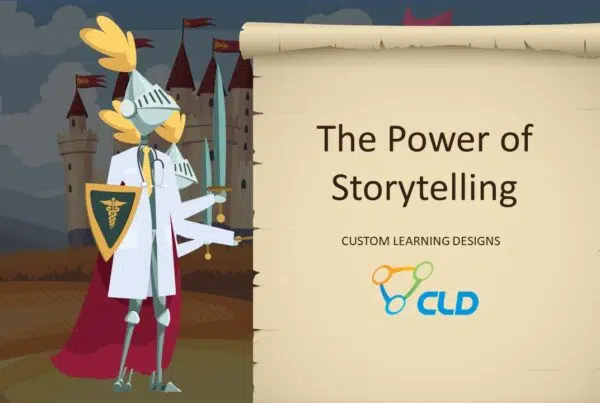People seem to have an innate proclivity to classifying people: by age, gender, race, and even career choice. While nearly 100% of people would state that judging others based on preconceptions is wrong, many still tend to categorize people, and one way people tend to do that is by generation. When we assume we “know” someone based on their generational identity, we relieve ourselves of the responsibility of thinking about (and perhaps getting to know) individuals, and by not getting to know individuals, we reduce the risk of having our expectations confounded.
Though the exact dates vary depending on source, the generations in today’s workforce are typically classified as follows:
- Traditionalists: born before 1946
- Baby Boomers: born from 1946-1964
- Generation X: born from 1965-1980
- Generation Y (also called Millennials): born after 1980
While we may think of these generational classifications as making it easier to communicate with those in different age groups, we risk using these age categories as part of the firmament of workplace expectations and roles. We could be selling ourselves short by doing this.
Some of the Most Common Generational Stereotypes
Everyone has heard the stereotypes about the different generations. Millennials are lazy and entitled, and Baby Boomers can’t use technology. Or, Millennials insist on the impersonality of texting and Skyping while Baby Boomers insist on having boring, in-person meetings. But most of us can say that we know people who upend these hackneyed descriptions, and frankly, most of us don’t like being defined by the era in which we happened to have been born.
But even whether or not we embrace generational labels varies across generations. For example, according to the Pew Research Center, the oldest Americans are least likely to assume their generational label, while the second oldest generation, the Baby Boomers, are most likely to identify themselves by generation.
Millennials? This “entitled” group is actually the most willing to associate negative stereotypes with their own generation, with nearly 60% describing Millennials as “self-absorbed.” What all this adds up to is that generational labels can make us think we understand other people, yet we’re more than happy to recognize our own distance from the generation to which we’re assigned.
Psychological and Organizational Effects of Stereotyping
“Stereotype threat” is the concern that an individual feels about directly or inadvertently confirming a negative stereotype about their “group,” whether it’s a generational group, gender, race, or other designation. It can be particularly pervasive in the workplace, where everyone is routinely evaluated. Stereotypes are powerful because they anticipate (rightly or wrongly) what a person will do based on his or her identity as part of a certain group. But this anticipation can result in an employee experiencing psychological stress, chronic suppression of negative thoughts, and disengagement with one’s social group so as to avoid confirming a negative stereotype.
Furthermore, stereotype threat can ultimately dampen a person’s aspirations, leading some people to conclude that they simply weren’t meant for leadership roles. It can also make people reluctant to embrace challenges where success isn’t a given, and it can cause affected individuals to be less willing to seek feedback or be open to it. And since finding and making use of feedback is essential to optimizing work performance, stereotype threat can harm job performance.
Organizational Prompts for Stereotyping Behavior
Certain ordinary structures in the workplace can unintentionally result in perception of stereotype threat. These include the organizational structure and its inclusiveness, task difficulty, organizational culture, and minority representation in the workforce and leadership positions.
Organizational structure may or may not make status differences between individuals clear, but in organizations where they do, stereotype threat can be a common perception by people further down the org chart.
Difficult work tasks are more likely to lead to stereotype threat than ordinary assignments, which makes it critical that all employees be adequately trained for the challenges they’re likely to face.
Organizational culture, or the overarching values and norms within a company, can also lead to stereotyping and consequently limit ambitions and achievements. Particularly when rigid beliefs about inborn talent underlie success, great danger exists of evaluating employees based on expectations rather than on actual performance.
Minority representation in workforces can affect whether stereotype threat is evident. For example, a lone minority may wonder if negative stereotypes are relevant since he or she is the only representative of a particular category.
The Importance of Training and Organizational Culture in Avoiding Stereotypes
It would be virtually impossible to overstate the importance of sales force training in mitigating stereotyping in the workplace. High quality training for each employee for the challenges they will face makes sense anyway, and it can help colleagues avoid subscribing to conventional labels based on gender, race, or age. When all team members learn through comprehensive training programs, everyone is more likely to feel empowered to reach further and explore career paths within the business, rather than looking elsewhere for opportunities.
It’s important in the pharma industry, however, that the training itself avoid convenient notions of the industry that may bubble to the surface, like the pediatrician client being a woman and the cardiac surgeon being a man. Role-playing as part of training or coaching must be inclusive and avoid stereotypes to help root out preconceptions.
Blended Learning Can Help You Avoid Stereotyping in Training
A blended learning environment is the best way to avoid stereotyping in training. And it makes sense for plenty of other reasons too. You may think that the Millennial male will naturally respond to gamification in training, but he may, in fact, prefer other modalities. Likewise, don’t make the mistake of assuming older learners won’t take to gaming as part of training. Just because they didn’t have the opportunity to use that modality when they were young doesn’t mean they won’t be enthusiastic about it now.
Typecasting people sells short our relationships with them. It’s not always easy to set aside assumptions about people, but particularly in the training environment, it’s essential to do so, so that every team member is equipped to handle the challenges they face in their day-to-day work. We invite you to explore our blog further for more insights into how training managers can maximize effectiveness for all learners of every generation.




